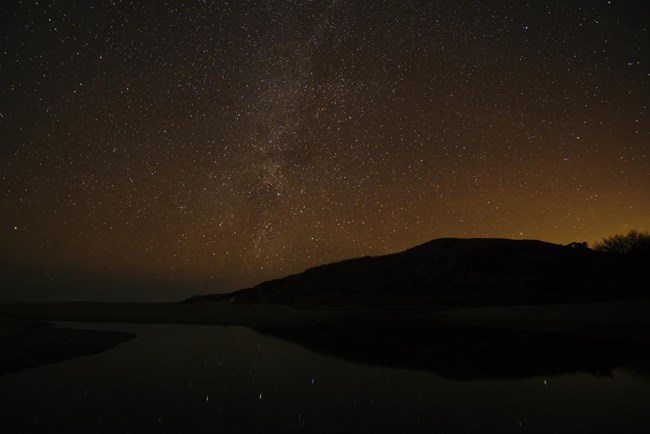
© Jessica Weinberg McClosky
Natural darkness is an essential component to the health of almost any ecosystem. Most living organisms are tuned to a circadian rhythm based on the planet’s 24-hour cycle, and artificial light disturbs this rhythm. Dark skies are also a culturally significant resource. Looking up and seeing a sky full of stars is a fundamental human experience, and it is one of the most basic ways of enjoying our world and beyond.
National parks are protective harbors for some of the last remaining dark skies in the country. Yet this valuable resource is diminishing in many park units. Encroaching sources of light pollution often come from outside of park boundaries, but San Francisco Bay Area Network park managers are working to identify, monitor, and research, sources of light pollution within the park as well so that they can solve these local light pollution issues. Pinnacles National Park, for example, removed all the lights from its parking lots and converted all outdoor lamps to low-wattage bulbs on timers. Golden Gate National Recreation Area is taking steps to protect its own natural lightscapes through its General Management Planning process. The recently opened Cavallo Point Lodge and conference facility at Fort Baker features carefully designed ultra-dark-sky outdoor lighting for the complex of 21 historic and 12 new buildings.
Quick Reads
Last updated: April 27, 2018
